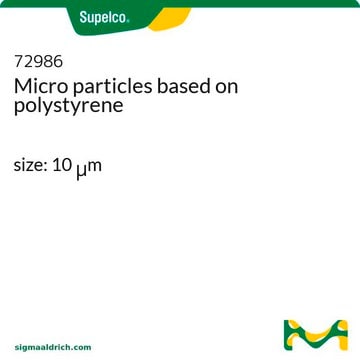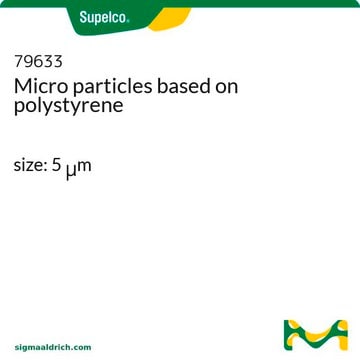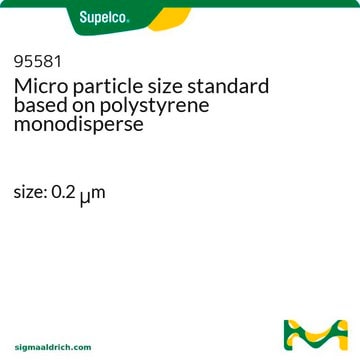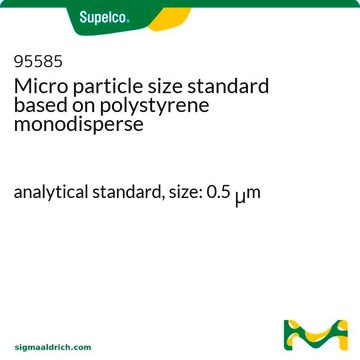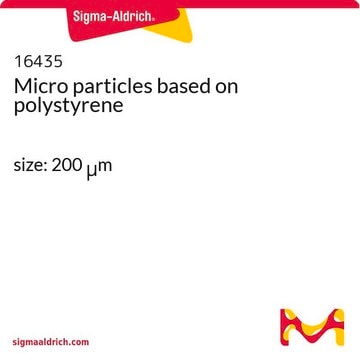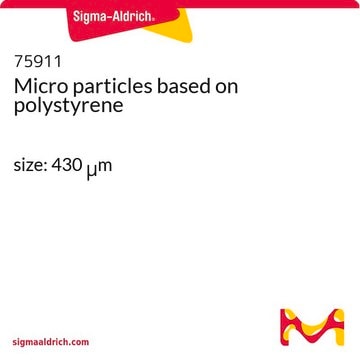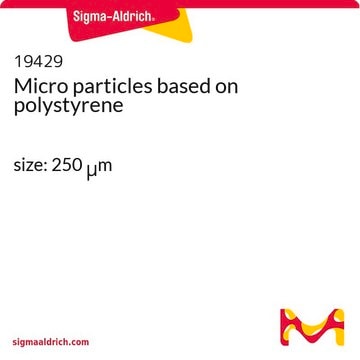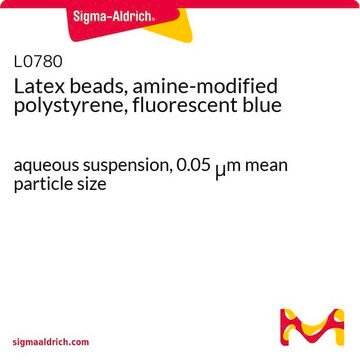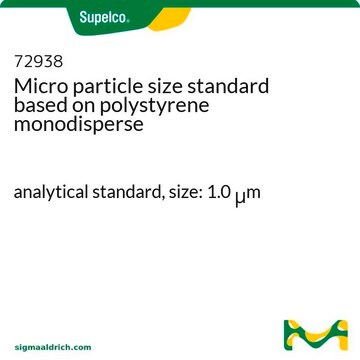The product was not test using the UV-vis system. Therefore, the data are not available.
43302
Micro particles based on polystyrene
size: 100 nm
Sinonimo/i:
Latex beads from PS
Scegli un formato
Scegli un formato
About This Item
Prodotti consigliati
Stato
aqueous suspension
Concentrazione
10% (solids)
Dimensione particelle
100 nm std dev ≤0.01 μm
Densità
1.05 g/cm3
Temperatura di conservazione
2-8°C
Cerchi prodotti simili? Visita Guida al confronto tra prodotti
Categorie correlate
Descrizione generale
Applicazioni
- Electron Microscopy.
- Cell Counter Calibration.
- Immunodiagnostics, especially for latex agglutination tests, and
- Phagocytosis Research.
Risultati analitici
Codice della classe di stoccaggio
10 - Combustible liquids
Classe di pericolosità dell'acqua (WGK)
WGK 3
Punto d’infiammabilità (°F)
Not applicable
Punto d’infiammabilità (°C)
Not applicable
Dispositivi di protezione individuale
Eyeshields, Gloves
Scegli una delle versioni più recenti:
Possiedi già questo prodotto?
I documenti relativi ai prodotti acquistati recentemente sono disponibili nell’Archivio dei documenti.
I clienti hanno visto anche
-
When measured by UV-vis, at what absorption peak does this bead appear?
1 risposta-
Utile?
-
-
Are the microparticles in a suspension sterile? Or is it possible to sterilize the suspension?
1 risposta-
The polystyrene microparticles offered for sale are not sterile.
Although autoclaving is a common method of sterilization, polystyrene microparticles are not autoclavable. Filter sterilization is also not a practical method. There are no available protocols for sterilizing polystyrene microparticles. From the remaining methods for sterilization, it should be possible to sterilize in 70% ethanol for 30 minutes and then rinse away the ethanol with sterile water. For small batches, UV radiation would be another option.Utile?
-
-
What kind of surface modification are performed on these particles?
1 risposta-
These particles possess a negative charge and have residual sulfate end groups as a result of the manufacturing process. This is not considered to be a functional group as would a carboxyl-, aldehyde-, or amine-functionalized product.
Utile?
-
-
Tween 20과 같은 분산제가 함께 첨가되었는지 문의드립니다.
1 risposta-
Micro Particles or Latex beads are supplied in aqueous solutions composed of polymer particles with water. No surfactant has been added.
Utile?
-
Filtri attivi
Il team dei nostri ricercatori vanta grande esperienza in tutte le aree della ricerca quali Life Science, scienza dei materiali, sintesi chimica, cromatografia, discipline analitiche, ecc..
Contatta l'Assistenza Tecnica.